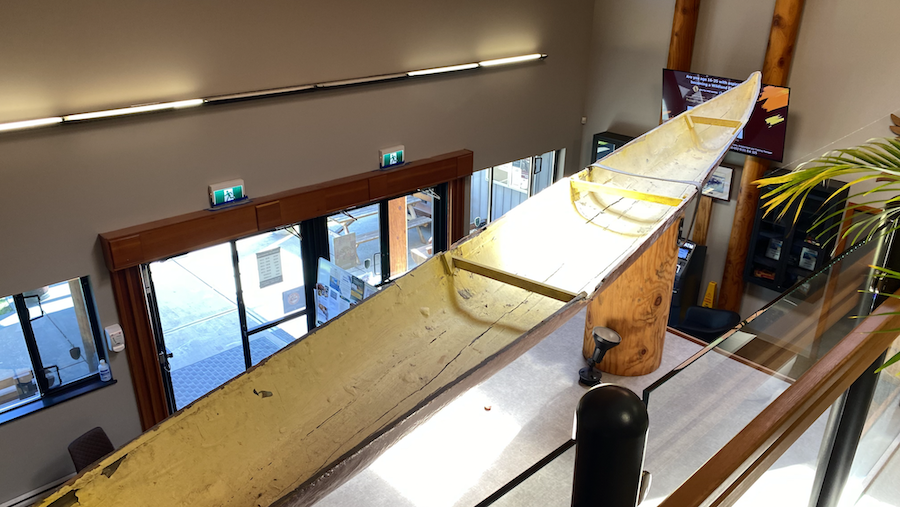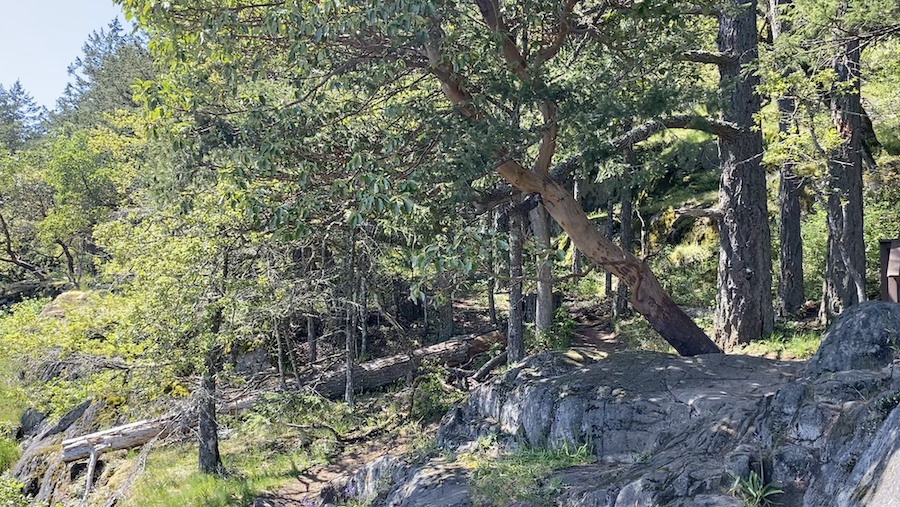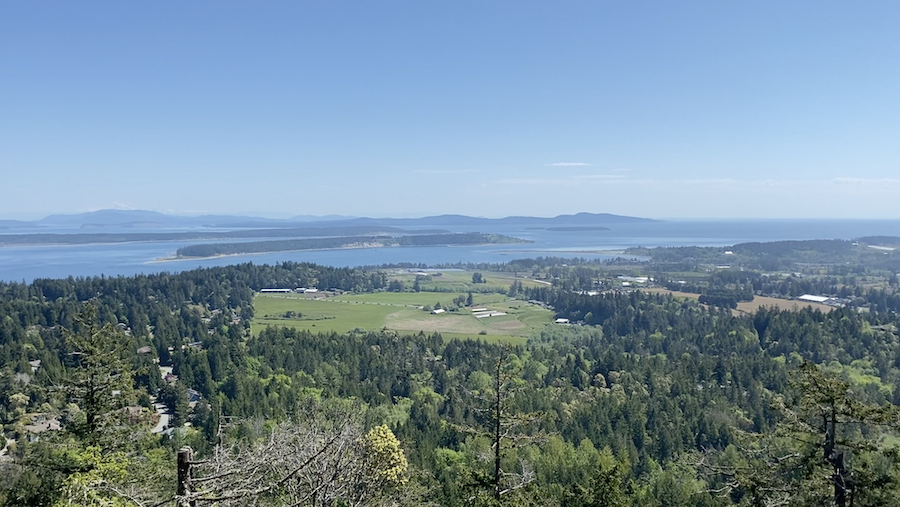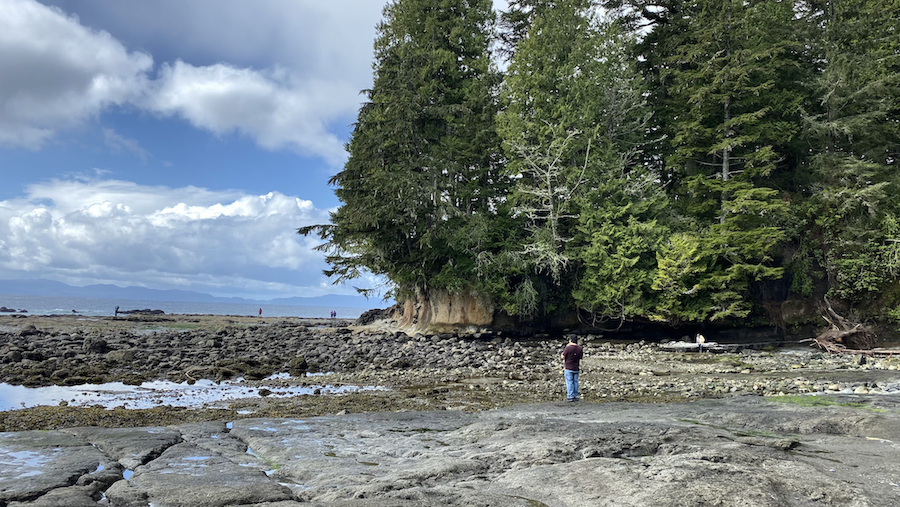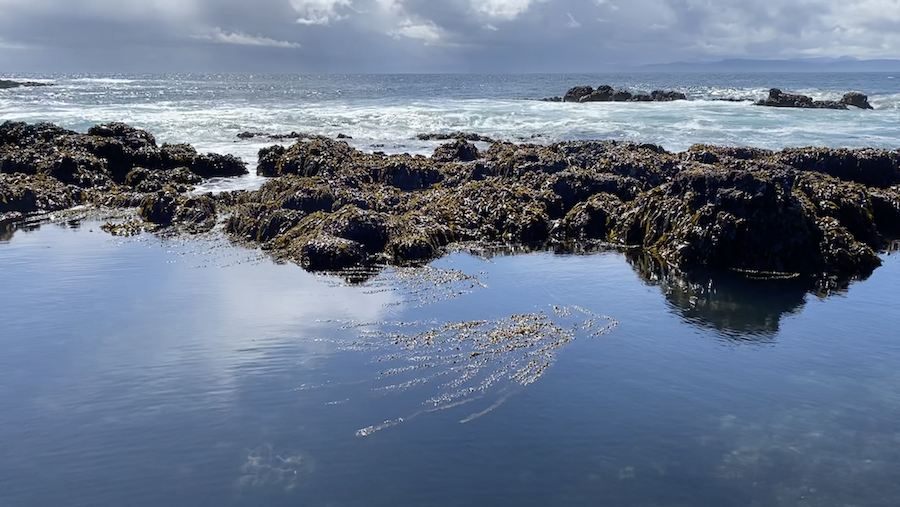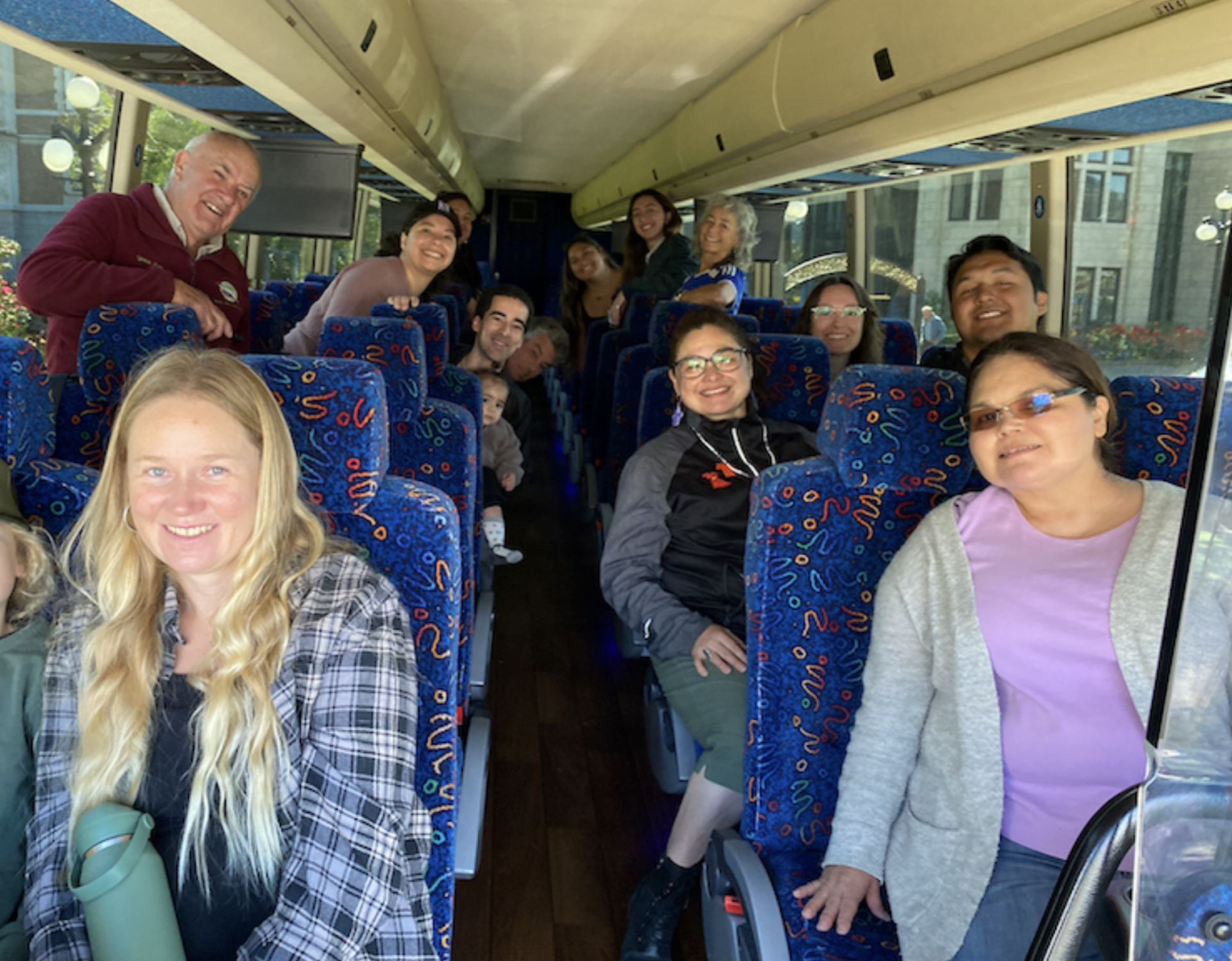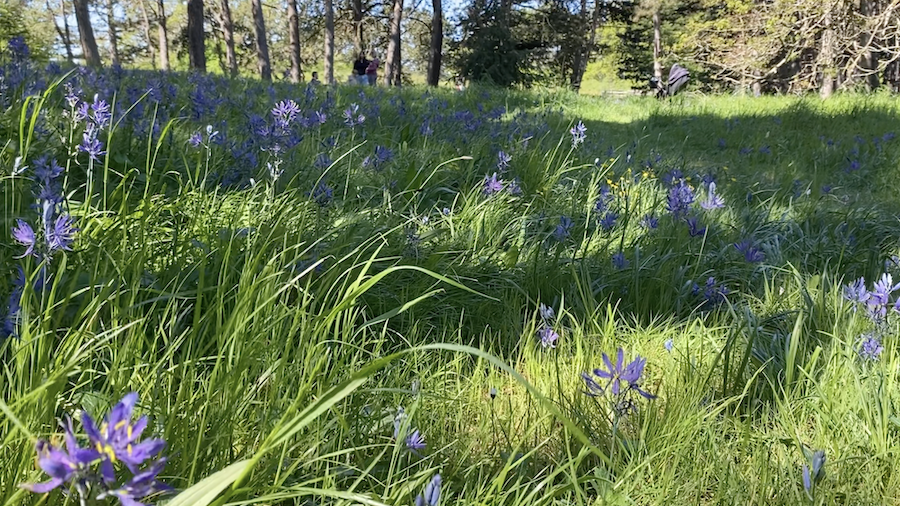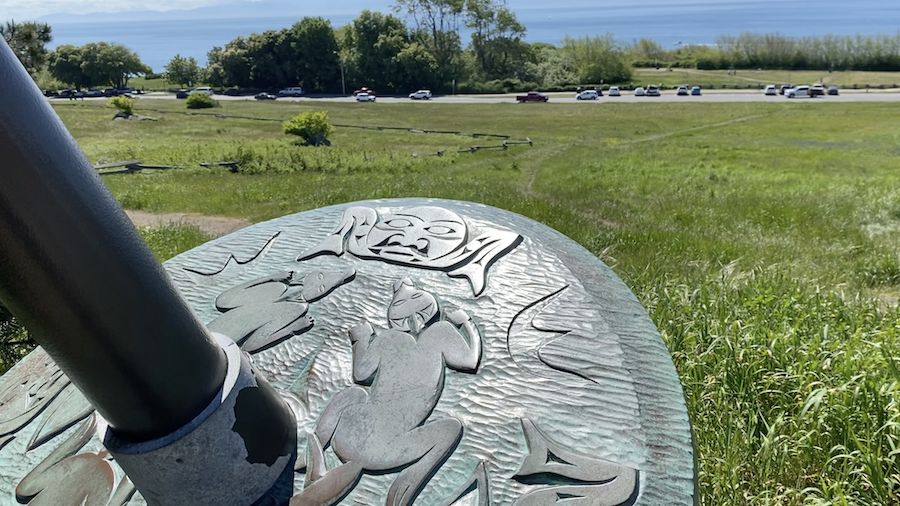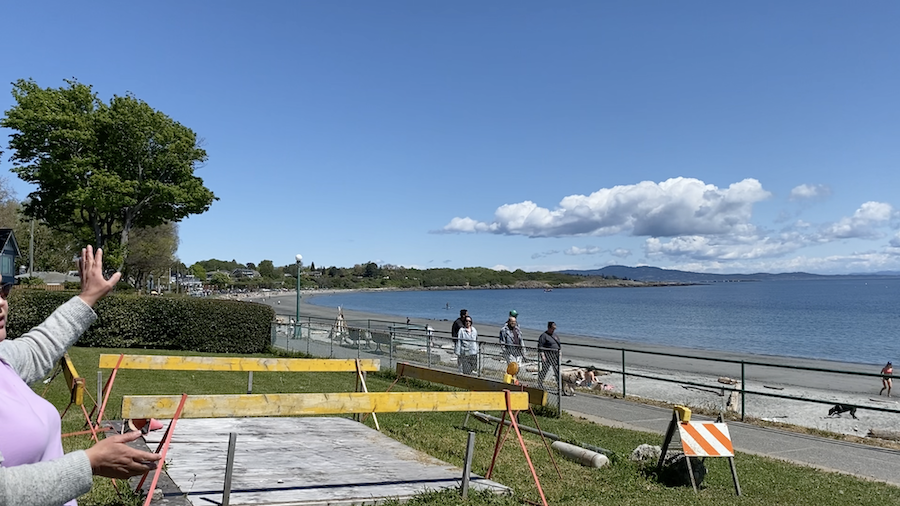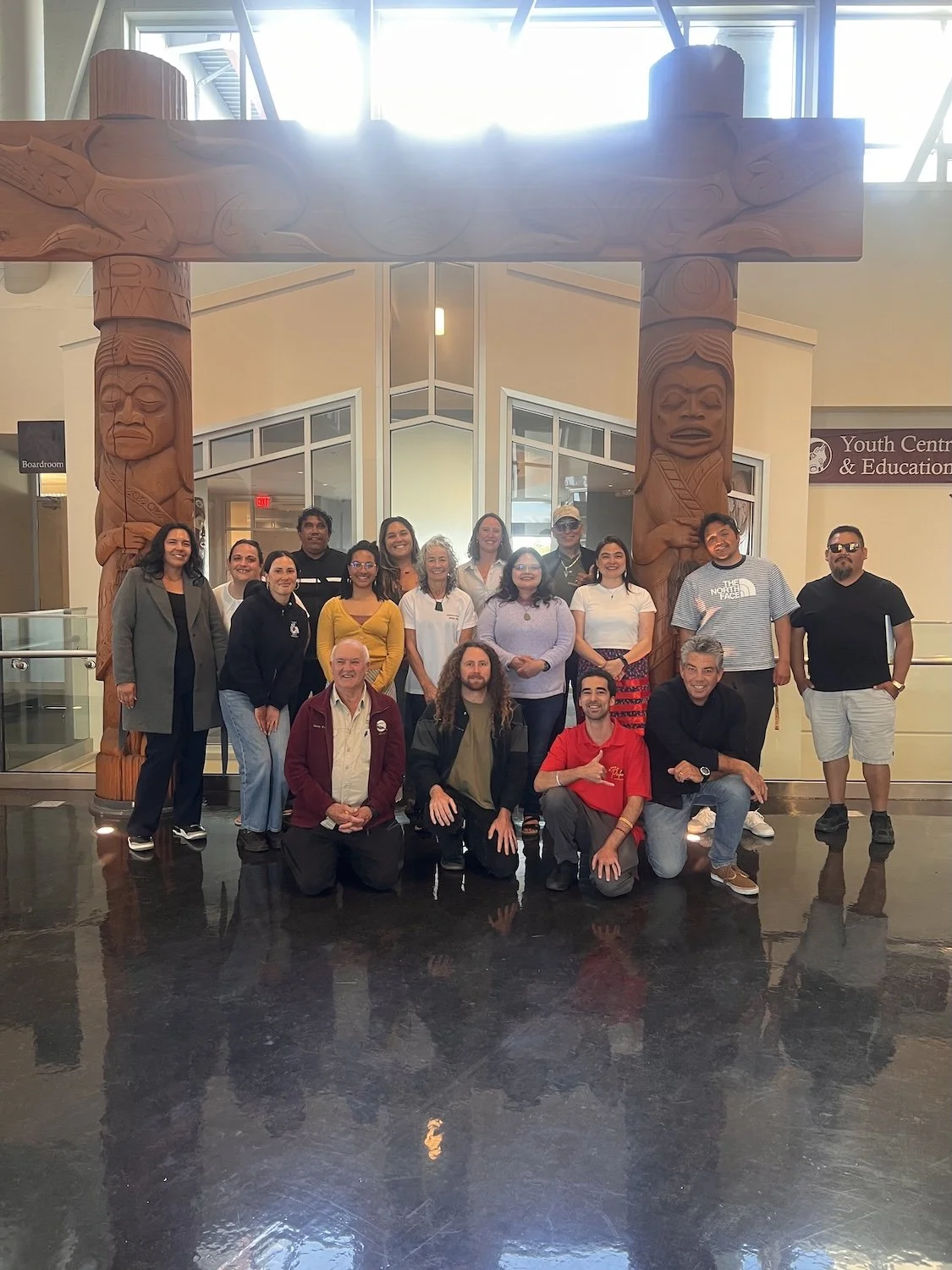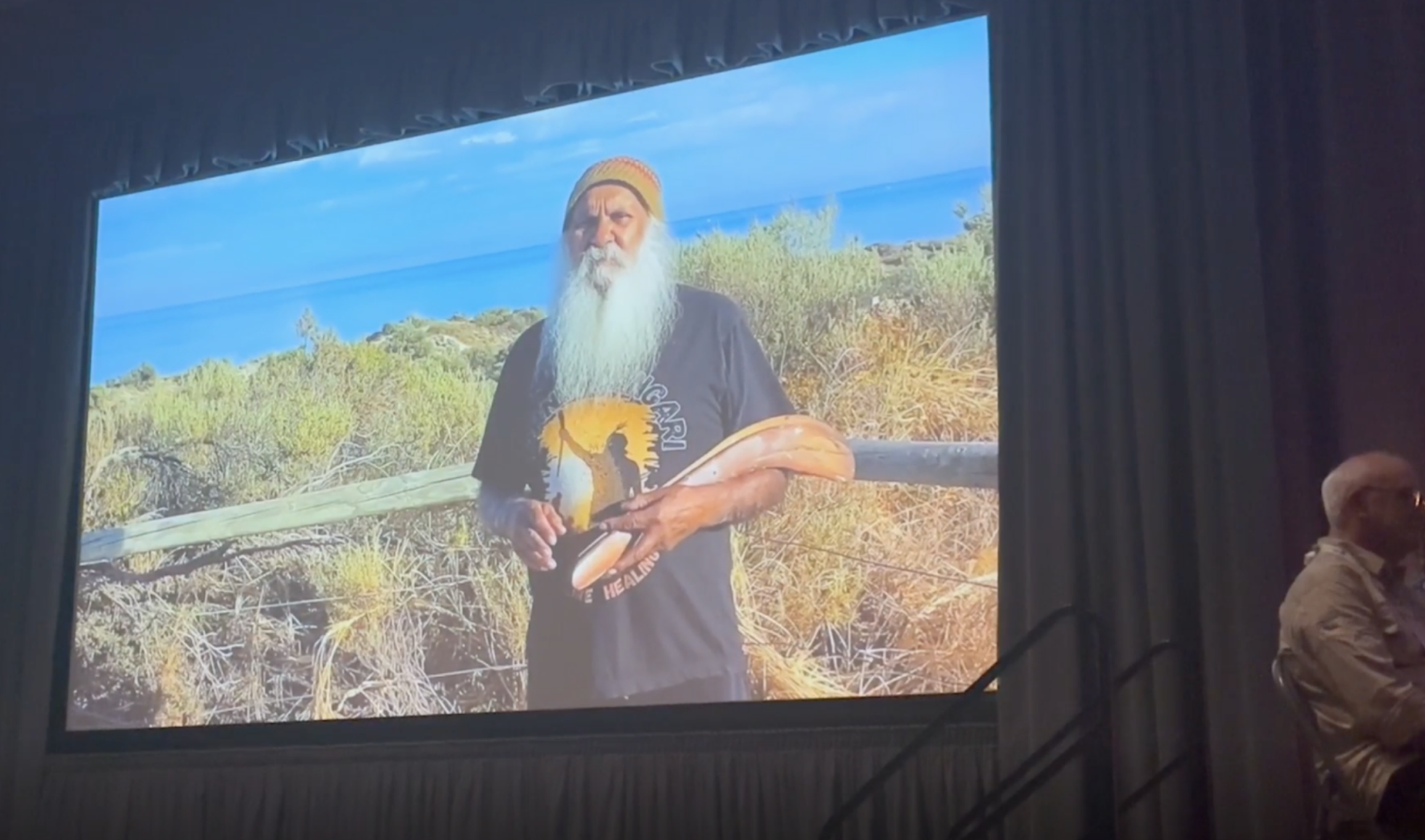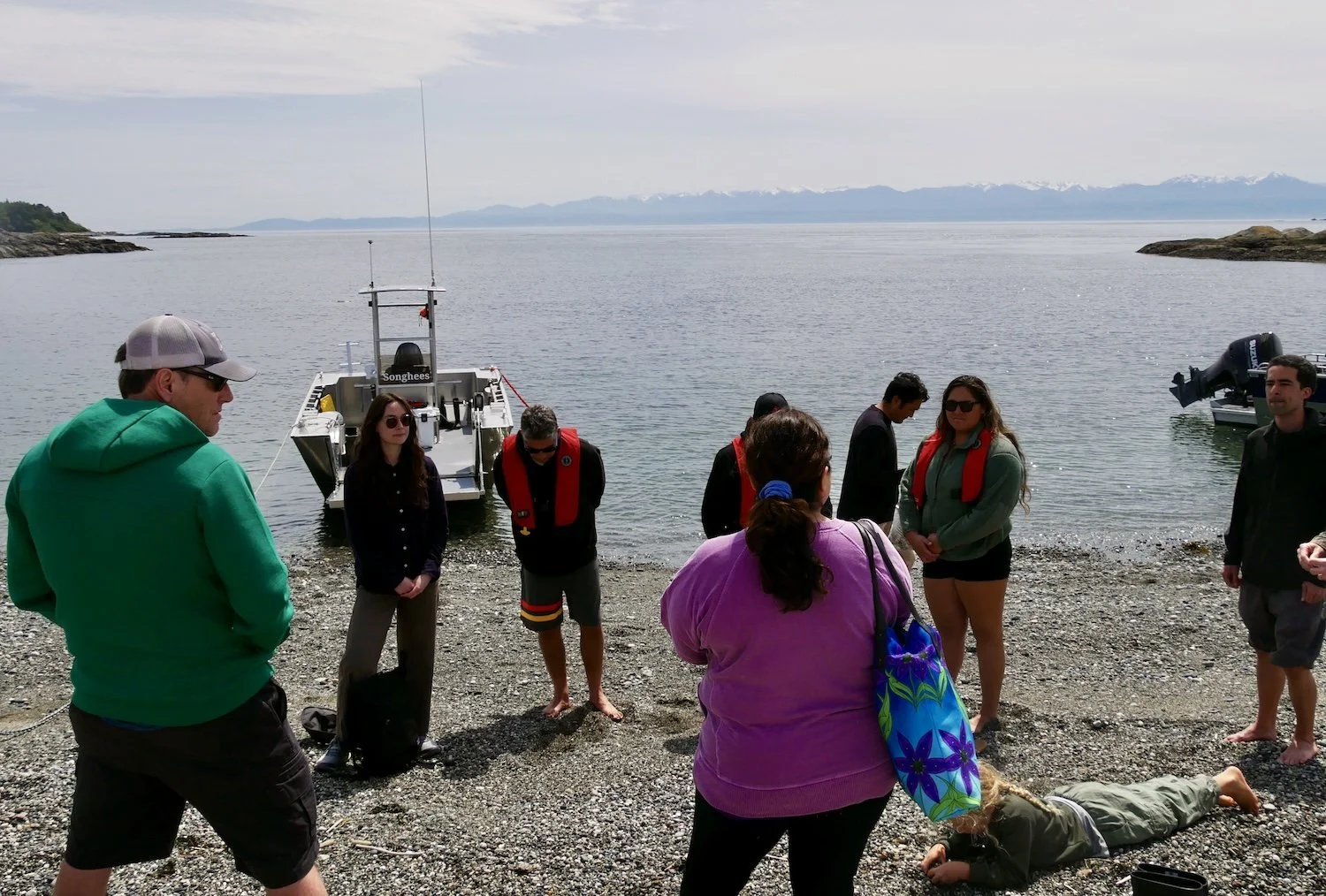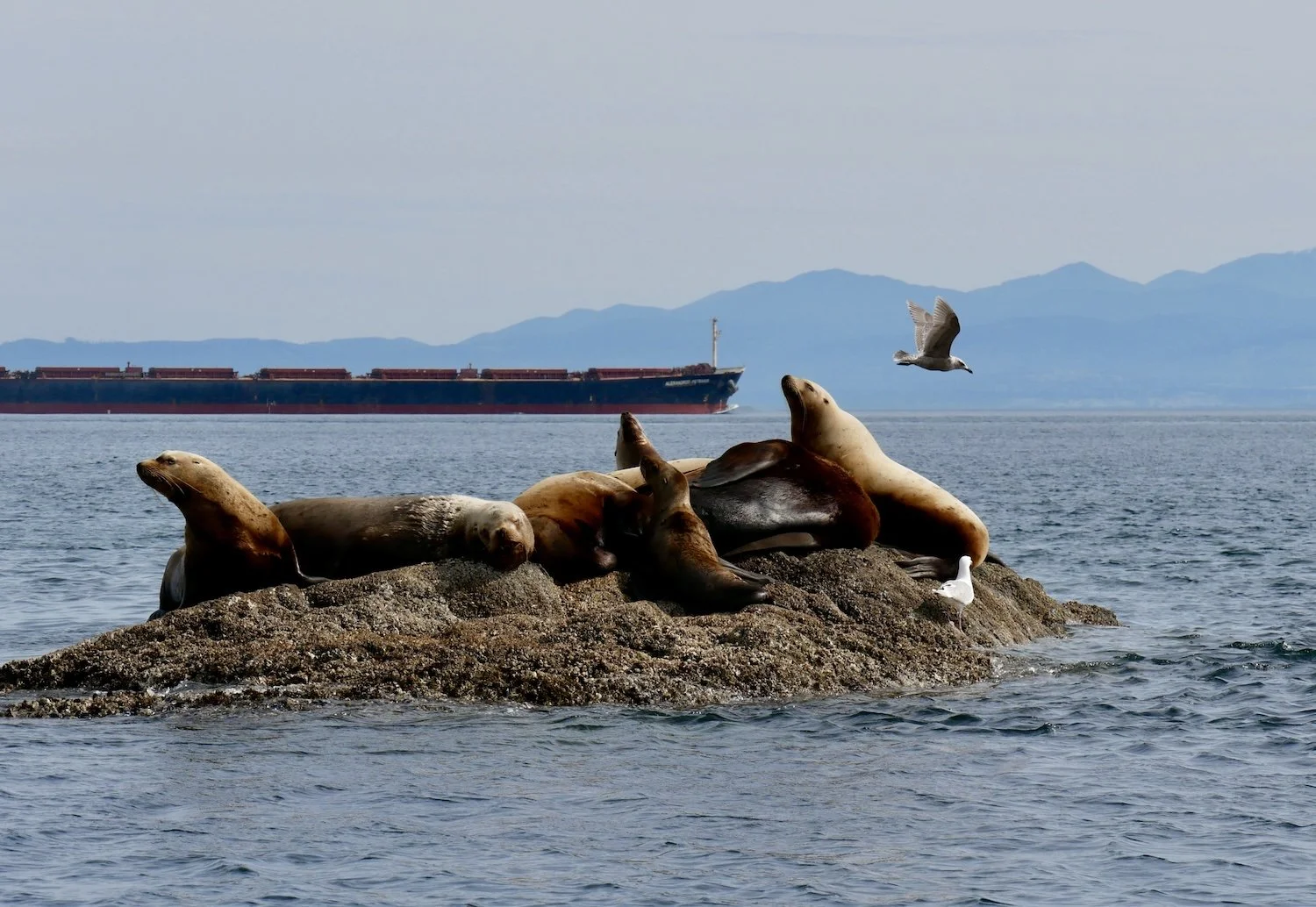International Seaweed Symposium 2025 - Victoria BC!
We were incredibly fortunate to be supported by the Fisheries Research and Development Corporation (FRDC) with a bursary for ourselves and three other First Nations people working with seaweed to attend the International Seaweed Symposium (ISS25) in Victoria, British Columbia. Attending the ISS allowed us to build on the connections made at the previous conference in Nipaluna/Hobart in 2023, and Brad organised a parallel program of activities to the official conference program that allowed First Nations delegates including friends from Aotearoa, Hawai’i, Canada and beyond to come together as a collective.
Whilst in BC, we were generously hosted by the Tsawout, Pacheedaht, Ahousaht and Songhees Nations. This cultural exchange was by far the most meaningful part of our trip.
THURSDAY 1ST MAY & FRIDAY 2ND MAY
Jennifer and Dion from Tsawout Nation led us and Bunganditj Elder Uncle Ken Jones on a tour of their band offices, traditional longhouse, a sacred estuary/coastal dune site called T̸IX̱EṈ (tee-quan) and some of their hunting and fishing grounds, including the site of a kelp remediation project. The next day, Jennifer provided us with the W ̱SÁNEĆ (Saanich) people’s origin story and we traveled with Uncle Ken to the top of ȽÁU,WELṈEW ̱ (Tlay-willl-nook) to read the story. We stood near the arbutus trees at the top of the mountain, reciting the story of how the W ̱SÁNEĆ people tied themselves and their canoes to the arbutus trees with cedar rope during the great flood until the water receded. This day was a meaningful cultural day with Uncle Ken.
SATURDAY 3RD MAY
The weekend before the conference commenced, 8 of us (First Nations from Aotearoa, Hawai’i and Australia) travelled west of Victoria to Botanical Beach on Pacheedaht territory to meet with Pacheedaht and Ahousaht nations. This meeting was facilitated by Kristine Gatzke. We were greeted on the beach and a ceremony by Ahousaht members was given to us. Eagles flew overhead and watched the ceremony from the top of a nearby tree. Around 20 people from different First Nations around the world stood in a circle and were cleansed by Ahousaht traditional greeting ceremony, allowing us to walk safely on the land. We all then introduced ourselves and had a cultural exchange. Pacheedaht foragers guided us along the coast to talk about their cultural connection to seaweed and the marine environment. This was the first day with First Nations from Aotearoa and Hawai’i on the island, and the ceremony was an important part of our group forming a bond.
SUNDAY 4TH MAY
On Sunday, a group of us (Uncle Ken, Brad, Chloe and family, Kalani and family (Hawai’i), Brendan & Suzi (Aotearoa), Lee and Māia (Aotearoa), Makanahele (Hawai’i)) were collected by bus for the Colonial Reality tour of Victoria, guided by the Songhees Nation’s Director of Environment and knowledge holder Cheryl Bryce. We visited locations including míqәn (mee-quan/Beacon Hill) and local coastal sites of significance to learn about Songhees traditional practices, post-colonial history, contemporary Caring for Country, ethnobotany, relations with council, etc.. Cheryl talked about the kelp monitoring program the Songhees Nation have developed in their local waters near culturally important sites among their protected islands. Underwater drone imagery and aerial photography is used in determining the historic and contemporary condition of their kelp forests.
MONDAY 5TH MAY - ISS Conference DAY 1
On Monday, the ISS conference kicked off! Chloe attended Louis Druehl’s keynote talk “A 200-year British Columbia seaweed perspective from a 1900 U.S. invasion to the challenging 2100 future”. This was a funny, and at times surprisingly moving, retrospective from the “Godfather of Kelp”. Druehl gave an insight into the scrappy beginnings of seaweed science in BC, highlighted the contributions of early women researchers, and showed us amazing archival snapshots of big names in Phycology partying in the 80s. On early 1960s scientific voyages to remote areas of the northwest pacific: “We were naive enough to think we were the first people to step on that shore. Of course there was no shore we stepped on that hadn’t been stood on many, many times before”. This absolute legend got a standing ovation at the end of his talk, and not all eyes in the room were dry.
In the afternoon Brad attended Māia’s (Indigenous Taranaki Whānui, Maori colleague from Aotearoa north island) presentation on traditional Māori uses of different natural fibres and her investigation of these materials and techniques for culturally appropriate kelp forest regeneration. Gametophytes attached to the natural fibres with high rates of success, and trials were conducted for weaving kelp sporophytes into traditional rope to be planted into their local bay. Holdfasts established well, however issues with overgrazing and storm surges impacted long term viability. Part of Māia’s research was presented in an exhibition, showing cultural crossover between science and traditional knowledge and communicating scientific outcomes through art and cultural practice.
Brad also attended Sarah Gutzman’s presentation titled ‘Indigenous Resurgence in the Blue Economy: Relational Values to Guide Kelp Mariculture’. Gutzman highlights the importance of Community values in the industry and the incongruency of the western capitalist framework with Indigenous worldviews - specifically from a Kwakiutl (Pacific Northwest British Columbia) perspective.
TUESDAY 6TH MAY - ISS Conference DAY 2
On Tuesday, Brad attended presentations including Chief Abraham Pelkey’s plenary presentation about Tsawout Nations environmental remediation work including a partnership with Cascadia Seaweed and their ocean based long line sugar kelp farm. Chief Abraham talked about many things, with a couple of highlights including:
Tsawout’s philosophy of “Ayluhnanukt”, to learn from the land you need to be out on the land, and the cultural importance of finding economically sustainable ways of enabling Tsawout people to work on the land.
Certain culturally significant species of fish that haven’t been seen for a long time are returning to the site of the kelp farm.
Rosa Laucci’s presentation titled ‘Ghvtlh-k'vsh shu'-srnelh-'i~ (Kelp Guardians) of California's North Coast’ showed current environmental remediation using kelp farming with the Tolowa Dee-ni Nations of Northern California and Southern Oregon. Key take-aways included:
Cultural marine keystone species were discussed.
The Kelp Gaurdians have partnered with seaweed farming company Sunken Seaweed, the Cal Poly Humboldt Rou Dalagurr Food Sovereignty Lab and Traditional Ecological Knowledges Institute with Dr Cutcha Risling Baldy, and Reef Check.
The purpose of the Kelp Gaurdians project is to supply the Tolowa Dee-ni Nations’ Natural Resource Department with the tools necessary to develop tribal kelp forest monitoring and restoration best practices; to produce traditional foods for the community and protect food sovereignty; and to support tribal youth in educational endeavours.
Sunken Seaweed have helped establish cultivation systems for growing Pyropia seaweed species.
In the afternoon Brad attended the Pacifika mini-symposium titled ‘Advancing Food Systems through Traditional Knowledge Sharing’ chaired by University of Sunshine Coast researcher Libby Swanepoel. A series of presentations from Pacifika representatives discussed the current state of the seaweed industry across the Pacific nations of Kiribati, Fiji, Solomon Islands and Samoa. Other points to highlight from these presentations were:
Oral traditions and Indigenous knowledge systems should be given same respect as Western science.
Indigenous protocols important to follow in events such as conferences. Same protocols should be used to inform research and data collection from Indigenous communities.
Pacific nations have formed a network to empower women and share knowledge regarding the seaweed industry. Caulerpa and Gracilaria harvest is prominent. Seaweed industry is dominated by women, both as seaweed harvesters and vendors.
Food science collaborations have been undertaken with local communities.
Use of traditional materials in seaweed farming infrastructure such as mangrove trees.
More seaweed is being sold and consumed by people in Pacific nations.
WEDNESDAY 7TH MAY - Songhees Wellness Centre gathering of First Nations delegates (mid-conference break day)
30 Indigenous people from Canada, Aotearoa, Hawai’i, and Australia gathered at the Songhees Wellness Centre in Victoria (and some dialed in remotely). We were welcomed to Country by a Songhees Elder and hosted by senior cultural practitioner, community leader and Songhees Director of Environement Cheryl Bryce.
Over the past 12 months Brad has been in touch with around 70-80 members from various First Nations globally that expressed interest in participating in the emerging collective. These Indigenous leaders are on an email list that Brad invited, and a significant number made up those present at the workshop on the Wednesday.
The first half of the day was a cultural exchange between all the Indigenous people present, with introductions and information about what everyone was doing with seaweed and the marine environment in their local communities - highlighting the importance of cultural connection to land, water and sky and the shared cultural obligation to manage those ecosystems.
The Songhees Nation provided us with a catered lunch, including traditional foods.
The second half of the day was a workshop where everyone discussed how we could work together moving forward, including formats, how regularly we would meet, what kind of involvement we would have with the ISS into the future, whether we could create our own symposium and other potential seaweed conferences we could attend.
The day was regarded as a great achievement by everyone involved and we plan to reconvene in the near future to solidify our working arrangements. Kalani and Brad will meet later in 2025 to discuss next steps and contact the rest of the group.
THURSDAY 8TH MAY - ISS Conference DAY 4
Mini-symposia co-chaired by Brad Darkson and Kalani Carlson titled: ‘The Indigenous Seaweed Revolution - Building a Collective and Navigating Toward Abundance.’ 13 First Nations people spoke and presented in a yarning style format on the ISS25 main stage. (image at top of blog post)
The session commenced with a video presentation by Uncle Moogy, acknowledging the panel and everyone present at the symposium, paying his respects to our ancestors, inviting all our ancestors from the four directions to join us for the event, and asking the ancestors to take away any negative energy from everyone present as we walk together.
Photo courtesy Erin Latham
Presentations from the group included themes such as: decolonising methodology within academia, blue carbon research from an Indigenous perspective, ways that companies and industry can work with Indigenous communities in meaningful and productive ways, cultural considerations when seeking to exploit marine resources for economic and environmental reasons, current remediation projects led by Indigenous people in their sovereign waters, results of monitoring led by community, invasive species management and applying an autobiographical lens to Caring for Country.
Brad attended other presentations in the morning including a special panel discussion with Tsawout Nation member, cultural leader and Reef Net Revitalisation Project coordinator Jennifer Claxton titled ‘Seaweeds and People’, a few other panellists and chaired by Tsartlip First Nations man Adam Olsen. The panel discussed themes such as traditional Inuit knowledge in the seaweed industry, sensory analysis and culinary uses of kelp, and Indigenous sovereignty over, uses of, and rights to marine resources.
Chloe attended sessions in the afternoon covering Ulva in land based IMTA systems, kelp in IMTA, and diversification of aquaculture production.
FRIDAY 9th MAY - ISS Conference FINAL DAY & visit to Tl’ches (Chatham and Discovery Islands)
Chloe attended the “Sea Wheat” mini-symposia - talks covered IMTA systems, processing and safety profile for human food, comparison with soy, Ulva in animal feed, eco-system services, on-land cultivation potential, sustainable development goals.
A group of us including Uncle Ken, Brad, Chloe and family, Kalani (Hawai’i), Suzi & Brendan (Aotearoa), Lee (Aotearoa), Makanahele (Hawai’i) were invited by Cheryl and the Songhees fisheries team to visit sacred islands off the coast of Victoria.
Tl’ches and the surrounding waters are a unique ecosystem, rich with marine resources. Tl’ches is one of the last locations in Songhees homelands that remains almost as it was 200 years ago. The islands and marine areas reflect Songhees' relationship to the land and water including cultivated Indigenous gardens, fishing, and clam gardens. (https://songheesnation.ca/services/songhees-marine)
Photo courtesy Suzi Flack
Photo courtesy Suzi Flack
Photo courtesy Suzi Flack
All in all the 11 days we spent on Vancouver Island were incredibly important for our international relationships with First Nations ocean people and seaweed practitioners. It was a very fulfilling, engaging and culturally significant exchange that we will continue to build upon through the work we do back home on Kaurna yarta and through future exchanges with this amazing group of cultural warriors and ocean protectors.


